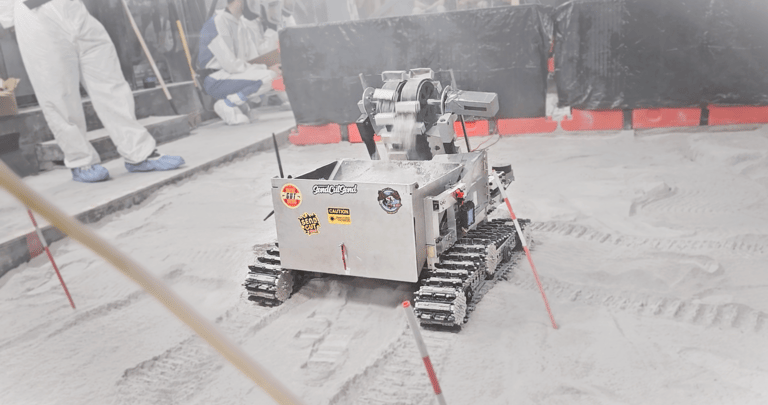Overview
For this project, I led a first-year team competing in the NASA Lunabotics competition to design, build, and test an autonomous lunar construction robot from scratch. As the Project Manager, I managed the team, led our systems engineering effort, raised $12k in funding, and did critical hands-on work with the robot to get it ready for competition – where we achieved our first ever successful competition run and were one of only 11 teams to operate our robot autonomously.
To start off, I worked with the rest of the leads to write a Project Management Plan that earned a perfect score from NASA judges and got us into the competition. From there, we went through the whole NASA project life cycle, going from SRR (System Requirements Review) to PDR (Preliminary Design Review) to CDR (Critical Design Review) to SIR (System Integration Review) to competition in under 8 months. Throughout this process, I ran design reviews, created our ConOps, wrote system requirements, managed our cost, budget, & schedule, and oversaw efforts to perform design trades, handle interfaces, and conduct FMEA. Along with the rest of the leads, I also worked on our 25-page Systems Engineering Paper, which scored 9th out of 38 and won us the Nova Award for Stellar Systems Engineering by a First Year Team.
During the design process, I was more involved with the management aspect than the technical aspect of the project, but once we started assembly & integration, it was essentially all hands on deck. Issues started popping up (overlooked interfaces, shipping delays, manufacturing imperfections, etc.), and the schedule, which up until that point had stayed on track, began to slip. It took a lot of long hours by the team, and I had to spend a lot of time in the trenches myself - getting holes on the chassis to align, woodworking a slot for the dump bin actuator, drilling a hexagonal hole in a steel rod using a drill press with circular drill bits (this took me 12 whole hours). But nevertheless, we got it done.
The work, however, did not stop after we drove down to Florida for the competition. For the five members who made the trip, myself included, it was eat, sleep, work on the robot, repeat for five days straight – making last-minute tweaks, fixes, and improvements to our robot. After a disappointing first run where we only drove a couple meters before a loose wire cut off power, we worked tirelessly to fix our issues and test our robot thoroughly. 40 hours later, we bounced back with a vastly improved second run, excavating and constructing a berm with 2298 cm³ of lunar regolith simulant.


